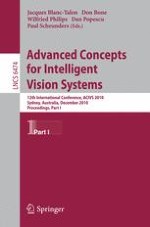This volume collects the papers accepted for presentation at the 12th Int- national Conference on “Advanced Concepts for Intelligent Vision Systems” (ACIVS 2010). Following the ?rst meeting in Baden-Baden (Germany) in 1999, whichwaspartofalargemulticonference,theACIVSconferencethendeveloped into an independent scienti?c event and has ever since maintained the tradition of being a single track conference. ACIVS 2010 attracted computer scientists from 29 di?erent countries, mostly from Europe, Australia, and the USA, but also from Asia. Although ACIVS is a conference on all areas of image and video processing, submissions tend to gather within certain major ?elds of interest. This year 3D and depth processing and computer vision and surveillance were popular topics. Noteworthy are the growing number of papers related to theoretical devel- ments. We would like to thank the invited speakers Mubarak Shah (University of Central Florida), Richard Kleihorst (VITO, Belgium), Richard Hartley (A- tralian National University), and David Suter (Adelaide University) for their valuable contributions.
